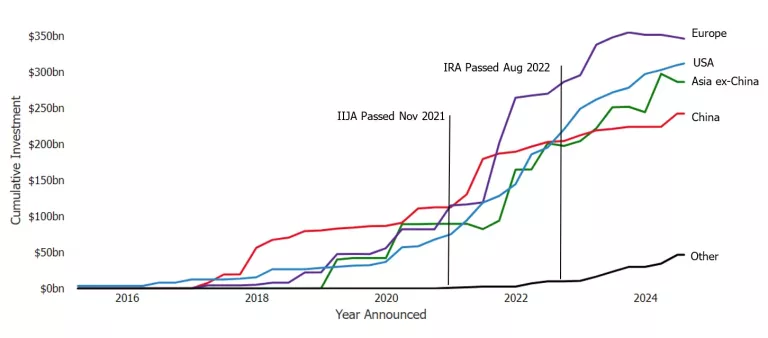Norway Grows EV Share â Tesla Model Y Bestseller

Norway’s electric vehicle transition continued to progress in June, with plugin electric vehicle share of 89.9%, up from 84.9% year-on-year. Overall auto volumes were down 27% YoY, to 14,901 units. The Tesla Model Y was the overall bestselling auto, at 2,531 units.
Market Share Trends
May’s combined plugin result of 89.9% comprised 78.7% full battery electrics (BEVs), and 11.2% plugin hybrids (PHEVs). BEVs grew their share by 14% YoY, up from 64.7%, while PHEV lost just over 8%, from 20.3%.
Volumes of both plugin types were down YoY, with BEVs (down by 14%) notably impacted by Tesla’s recent production pauses in Shanghai. The Model 3 and Model Y delivered 2669 combined units in June, compared to 4997 units at the end of the previous quarter. This dented overall BEV volumes by a pro rata 2,328 units, which more than accounts for this June’s YoY shrinkage. This will recover back to recent trendlines, by the end of Q3.
Combined plugless volumes got the short end of the stick, falling by more than 50% YoY, and with combined share only just scraping 10%.
Best Sellers
In the June auto rankings, the Tesla Model Y took the top spot, followed by the siblings, the Volkswagen ID.4, and Skoda Enyaq. The top five spots were filled out by the BMW iX, and Audi e-tron.
Whilst Tesla’s result is somewhat expected, both the VW ID.4 and the Skoda Enyaq surprised, with their best performances of the past 12 months (by far in the Enyaq’s case).
The only other notable news was the lack of an end-of-quarter surge from Tesla’s Model 3, due to the Shanghai issues mentioned previously. More on the magnitude of this below.
If we take a step back and look at the longer term picture, we can get a better sense of recent trends:
The Tesla Model Y still leads, but its gap over the VW ID.4, and the trailing models, is much smaller.
Here are the notable movements in the delivery volume, and rankings, compared the January-to-March quarter:
Lower down the table, the BMW i4, BYD Tang, MG Marvel R, Citroen e-C4, and BMW iX3, all grew volume by between 2x and 4x (though from more modest baselines), and climbed the rankings. All are now firmly in the top 20.
Meanwhile several other BEV models fared less well, mostly due to temporary allocation reasons:
- The Tesla Model 3 lost ~90% volume, and fell from 2nd to 41st, due to those Shanghai shutdowns
- The Audi Q4 e-tron dropped half its volume and fell from 4th to 10th
- The Hyundai Ioniq 5 dropped volume ~40% and fell from 5th to 9th
Most others moved just by a spot or two. Relative newcomers to keep an eye on in the months ahead are the Renault Megane, and the Mercedes EQE.
Outlook
The only non-BEVs in Norway’s top 20 best selling autos in June were two Toyotas. The 5th spot was taken by the RAV4 (comes in HEV and PHEV versions, no data on the sales split), and the 15th spot by the Yaris/Yaris Cross (comes in HEV and petrol-only versions).
The RAV4 makes little sense to me (since there are already very compelling BEVs in this class and price). Perhaps its customers are some of those folks who live very remotely and don’t yet feel confident about re-charging infrastructure in their region. Any readers with local knowledge, please chime in the discussion below.
The Yaris makes a bit more sense. Starting from just under €28,000, there are not many small-hatchback BEVs to compete on both price and on range. The now-phased-out VW e-Up! was lower priced (and similar sized) but at a WLTP range rating of 258 km it was not near the Yaris for perceived competence as an all-rounder.
Meanwhile the Peugeot e-208, and Opel Corsa-e are a match for the Yaris on price and size, but some shoppers may still feel they fall short on range. They have a WLTP rating of around 360 km, and realistic hard Norwegian winter highway range of perhaps 200-220 km.
For the remaining non-plugins like the Yaris to be outcompeted by BEVs in Norway requires the new generation of ground-up-designed, small BEVs, like the BYD Dolphin and others, which can more closely compete both on price and on practicality (around 400 km WLTP, close to 300 in winter). Until such compelling models are offered at lower price points (and in a few remaining niche segments), I don’t see how BEVs can close out the last few percent of sales.
Nevertheless, plugins will continue to climb into the mid 90% range in the months ahead. Other things being equal, I expect September or December to see over 88% BEVs, along with 6% to 8% PHEVs, so around 95% plugins.
What are your thoughts on Norway’s final steps towards 99-plus% plugins? How do you see it playing out, and how long will it take? Please join in the discussion below.
Appreciate CleanTechnica’s originality and cleantech news coverage? Consider becoming a CleanTechnica Member, Supporter, Technician, or Ambassador — or a patron on Patreon.
Advertisement
 This post has been syndicated from a third-party source. View the original article here.
This post has been syndicated from a third-party source. View the original article here.








